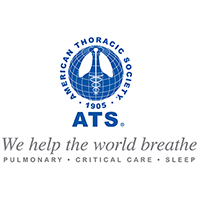American Thoracic Society
Pauline K. Park M.D., James M. Blum M.D., Lena M. Napolitano, M.D.,
Gail Annich, M.D., Jonathan W. Haft, M.D., and Robert H. Bartlett, M.D.
University of Michigan Health System
Extracorporeal membrane oxygenation (ECMO) provides continuous cardiopulmonary support on a long-term basis, typically on the order of days to weeks, as adjunctive management of severe respiratory and cardiac failure. The goal of therapy is to minimize ventilator-induced lung injury while allowing additional time to treat the underlying disease process and to permit recovery from acute injury. ECMO is a complex technique and requires a dedicated team, appropriate equipment, institutional commitment and thorough preparation. Potential complications are significant and its use is advocated only in patients who have substantial risk of death.
Historically, ECMO for influenza has been performed in neonatal and pediatric populations, with overall survival to discharge of 50% (1). Recent reports of successful ECMO support in older H1N1 influenza patients with severe respiratory failure (2, 3) raise questions as to the role of extracorporeal support for adolescents and adults.
During the 2009 Australia and New Zealand outbreak, the majority of H1N1 influenza cases receiving ECMO support were over 18 years of age, with a median age of 36 years (3). At the time of the most recent report, 32% of the cohort remained alive in the hospital, 47% had survived to discharge home and 21% had died. ECMO utilization was estimated at 2.6 per million population, or potentially 800 or 1300 cases if extrapolated to the U.S. and European populations.
.....
full article
Pauline K. Park M.D., James M. Blum M.D., Lena M. Napolitano, M.D.,
Gail Annich, M.D., Jonathan W. Haft, M.D., and Robert H. Bartlett, M.D.
University of Michigan Health System
Extracorporeal membrane oxygenation (ECMO) provides continuous cardiopulmonary support on a long-term basis, typically on the order of days to weeks, as adjunctive management of severe respiratory and cardiac failure. The goal of therapy is to minimize ventilator-induced lung injury while allowing additional time to treat the underlying disease process and to permit recovery from acute injury. ECMO is a complex technique and requires a dedicated team, appropriate equipment, institutional commitment and thorough preparation. Potential complications are significant and its use is advocated only in patients who have substantial risk of death.
Historically, ECMO for influenza has been performed in neonatal and pediatric populations, with overall survival to discharge of 50% (1). Recent reports of successful ECMO support in older H1N1 influenza patients with severe respiratory failure (2, 3) raise questions as to the role of extracorporeal support for adolescents and adults.
During the 2009 Australia and New Zealand outbreak, the majority of H1N1 influenza cases receiving ECMO support were over 18 years of age, with a median age of 36 years (3). At the time of the most recent report, 32% of the cohort remained alive in the hospital, 47% had survived to discharge home and 21% had died. ECMO utilization was estimated at 2.6 per million population, or potentially 800 or 1300 cases if extrapolated to the U.S. and European populations.
.....
full article
